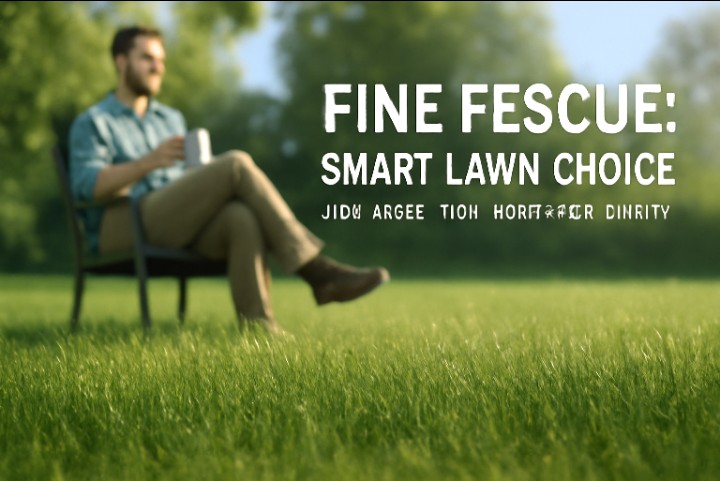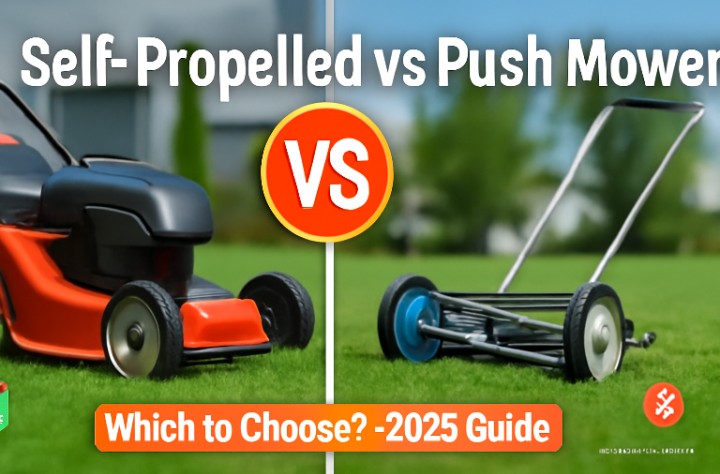The Water Crisis Reality in Western Cities
Water bills keep climbing across Western cities. Homeowners face tough choices between green lawns and manageable expenses. Climate change brings longer drought periods to Western regions. Summer temperatures break records annually. Traditional lawns struggle against these harsh conditions. Many cities implement water restrictions during peak summer months. Residents adapt to new watering schedules and conservation requirements. Smart homeowners explore drought-resistant alternatives. These grasses offer hope for sustainable landscaping solutions.
The Water-Efficiency Revolution: Why Traditional Lawns Are Failing
Traditional cool-season grasses were not designed for Western climates. They evolved in regions with consistent rainfall patterns. Western cities present different challenges entirely. Cool-season grasses like Kentucky bluegrass need regular moisture. Summer heat stresses these varieties beyond their natural limits. Water requirements increase dramatically during hot months. Cities across the West encourage lawn alternatives. Rebate programs support homeowners making sustainable switches. Conservation becomes a community priority. The math favors drought-resistant options. Lower water usage means reduced utility bills. Less maintenance saves time and money long-term.
Top Drought-Tolerant Grass Varieties for Western Cities
Premium Cool Season Options
The best drought-tolerant grasses are Bermudagrass, buffalograss, Zoysiagrass, bahiagrass, St. Augustinegrass, blue grama, tall fescue and creeping red fescue. This guide ranks the top options to help you choose the best grass for a low-water, resilient lawn.
Tall Fescue: Tall fescue, Festuca arundinacea Schreb. syn. Lolium arundinaceum (Schreb.) Darbysh., is of major economic and ecological importance in regions with summer-dry environments. Deep root systems access moisture other grasses cannot reach.
Improved Cool-Season Varieties: Research continues developing enhanced drought tolerance. Universities breed varieties specifically for Western conditions.
Top 8 Research-Backed Drought-Tolerant Options
Research from May 2025 identifies these top performers:
- Bermudagrass – Warm-season champion for extreme heat
- Buffalograss – Native prairie grass requiring minimal water
- Zoysiagrass – Dense growth pattern reduces weed problems
- Bahiagrass – Excellent for sandy soil conditions
- St. Augustinegrass – Popular throughout Southern regions
- Blue Grama – Native option supporting local ecosystems
- Tall Fescue – Cool-season variety with superior drought tolerance
- Creeping Red Fescue – Low-maintenance choice for problem areas
Regional Considerations for Western Zones
Summer-dry environments present unique challenges for grass survival. The review identifies constraints that these species are likely to experience under current and predicted increase of droughts due to climate change scenarios in south-eastern Australia, the southern Great Plains of USA and the Western Mediterranean Basin.
Southern California Focus: UC Riverside has licensed a new drought-resistant bermudagrass cultivar that may well change the landscape of Southern California and beyond. The agreement with licensee West Coast Turf will allow for the grass, which is being commercialized as Coachella™, to be available for purchase.
Texas Landscape Solutions: The 20 best drought-tolerant plants for Texas landscapes in 2025 create resilient, low-maintenance yards. Regional adaptation matters significantly for success.
Utah Developments: In the midst of a sweltering heat wave, the state of Utah this week approved a type of grass that will have a critical impact on future water conservation. BYU researchers contributed to this breakthrough.
Elevation and local climate patterns affect variety selection. Coastal areas differ from inland valleys. Professional guidance helps match grasses to specific conditions.
Water-Saving Technology and Strategies
Smart irrigation systems optimize water delivery. Drip systems target root zones directly. Soil moisture sensors prevent overwatering.
Establishment Phase: New grass requires consistent moisture initially. Once established, watering frequency decreases significantly. Deep, infrequent watering encourages stronger root development.
Seasonal Management: Summer becomes the testing period for drought tolerance. Proper variety selection reduces stress during peak heat.
Morning watering minimizes evaporation losses. Mulching around grass areas retains soil moisture. These practices reduce overall water requirements.
Lawn Replacement vs. Grass Conversion Programs
Complete lawn replacement offers maximum water savings. Native plant alternatives eliminate watering needs entirely. Many utilities offer rebates for turf removal projects.
Partial Conversion: Gradual replacement allows experimentation with different approaches. High-traffic areas might keep drought-tolerant grass. Decorative areas convert to native plants.
Program Availability: San Antonio Water System provides resources for drought-tolerant grass programs. Local utilities often offer support and incentives.
Maintenance requirements decrease with drought-resistant options. Less frequent watering reduces time commitment. Native varieties typically need less fertilization.
Economic and Environmental Impact Analysis
Water conservation translates directly to bill savings. Drought-resistant grasses use 30-50% less water than traditional varieties. Initial installation costs recover through reduced utility expenses.
Maintenance Savings: Less frequent watering lowers utility bills. Reduced fertilizer needs save additional money. Equipment lasts longer with simpler irrigation systems.
Environmental Benefits: Planting drought resistant native grasses can lower your water bill by conserving water & xeriscape landscaping. Reduced water consumption helps preserve local water supplies.
Property values benefit from sustainable landscaping. Water-wise features appeal to environmentally conscious buyers. Long-term sustainability reduces replacement costs.
Implementation Guide for Western Homeowners
Soil testing determines appropriate grass varieties. Clay soils retain moisture differently than sandy soils. Drainage patterns affect success rates significantly.
Timing Considerations: Spring installation works well for cool-season varieties. Fall planting allows root establishment before summer stress. Seed costs less than sod installation.
Professional Installation: Proper grading ensures adequate drainage. Poor drainage kills even drought-tolerant varieties. Irrigation modifications may be necessary.
Local extension offices provide region-specific advice. University research programs offer tested recommendations. Professional landscapers understand local conditions.
Future Outlook: The Next Phase of Lawn Evolution
Research continues improving drought tolerance in grass varieties. The university’s Office of Technology Partnerships said West Coast Turf hopes to initially target golf courses and sports stadiums that require a large amount of real grass. Homeowners’ lawns will come later, as supply increases.
Technology Integration: Smart irrigation systems become more affordable. Weather-based controllers adjust watering automatically. Mobile apps monitor soil conditions remotely.
Community Adoption: Neighborhood-wide conversions create larger impacts. HOA policies adapt to water conservation realities. Municipal incentives encourage widespread adoption.
Breeding programs focus on combining drought tolerance with traditional lawn appearance. Cool-season varieties gain heat resistance through selective breeding.
Conclusion: Making the Switch to Sustainable Lawn Care
Drought-resistant grasses represent the future of Western landscaping. Water restrictions will likely increase in frequency and severity. Proactive homeowners adapt now rather than struggle later.
Action Steps: Test soil conditions before selecting varieties. Research options suited to specific regional conditions. Consult local extension offices for expert guidance.
Professional Support: Landscape professionals understand local requirements. Proper installation prevents costly failures. Warranty protection provides additional security.
Long-Term Benefits: Sustainable lawns reduce drought-year stress. Lower maintenance requirements save time and money. Environmental benefits support community water conservation efforts.
The lawn revolution begins with informed choices. Verified research guides successful implementations. Water-wise decisions today create sustainable landscapes tomorrow.






